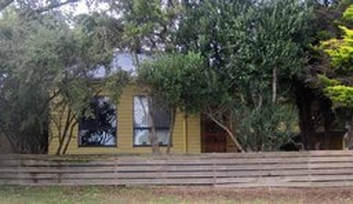
Without trees and gardens, our suburbs and cities will be much bleaker places, argues Anne Heath Mennell.
I’M LATE to discussion about Tim Shannon’s article Street Wise. At the time it began, I was in the final stages of writing up a research project on – gardens! I didn’t have time to respond to Tim’s original article but have read the comments sent in by others. Firstly, I want to thank Tim for starting us thinking about what is happening to our towns and cities. It’s not really a “hot” issue yet but I think it needs to be. So, here’s my two penn’orth.
Until recently, gardens have been a big part of our streetscapes, including our cities. Mature trees, nature strips and front gardens make our streets leafy and green. A substantial backyard has been an iconic feature of our suburbs.
Nowadays, however, new dwellings cover most of the block, leaving almost no open space. This change is documented in Professor Tony Hall’s detailed, quantitative research study, The Life and Death of the Australian Backyard (CSIRO Publishing, 2010). With luck, you may be able to borrow it from the library as it provides compelling evidence of this phenomenon of the “disappearing” gardens in new developments.
As our cities consolidate and continue to expand, land values and populations increase and so does the pressure to increase building densities. The first amenity to be lost is always open space, often in the form of gardens or parks. Individual houses and gardens are replaced by multiple, double-storey dwellings in a sea of concrete or paving. At the same time, Melbourne’s wonderful mature street trees, planted by our far-sighted civic leaders of the past, are coming to the end of their lives, hastened by extended droughts.
Why does this matter? Well, vegetation around a dwelling plays an important role in microclimate (shade, temperature, humidity), drainage, habitat and biodiversity. Urban trees, often described as the urban forest, help reduce carbon emissions; gardens allow laundry to dry naturally, provide access to light, air and views, give young children a safe place to play and offer the possibility of growing food.
Gardens benefit the wider community, not just their current owners. Current occupants may not want a garden but, once a block is built over, it is impossible to retro-fit a garden if future inhabitants want or need some green open space.
The need for consolidation and increasing density to limit the seemingly inexorable expansion of city boundaries is the usual reason given for the disappearance of our green spaces. However, Professor Hall shows, with evidence from England, it doesn’t have to be this way. Densities double or triple those in Australia are possible without losing a usable backyard. He suggests that planning policies and building codes could be amended very easily if politicians, planners and developers were made aware of the issues. As it is, he concludes that there has been an “absence of debate and an absence of concern” with “little or no appreciation of the environmental and social roles of suburban gardens”.
So, thank you again, Tim, for starting this discussion and maybe raising some concern. I doubt we can have much impact in Melbourne but maybe we could encourage our council to think about local planning guidelines and policies to protect our domestic and public green space. What do you think?
Until recently, gardens have been a big part of our streetscapes, including our cities. Mature trees, nature strips and front gardens make our streets leafy and green. A substantial backyard has been an iconic feature of our suburbs.
Nowadays, however, new dwellings cover most of the block, leaving almost no open space. This change is documented in Professor Tony Hall’s detailed, quantitative research study, The Life and Death of the Australian Backyard (CSIRO Publishing, 2010). With luck, you may be able to borrow it from the library as it provides compelling evidence of this phenomenon of the “disappearing” gardens in new developments.
As our cities consolidate and continue to expand, land values and populations increase and so does the pressure to increase building densities. The first amenity to be lost is always open space, often in the form of gardens or parks. Individual houses and gardens are replaced by multiple, double-storey dwellings in a sea of concrete or paving. At the same time, Melbourne’s wonderful mature street trees, planted by our far-sighted civic leaders of the past, are coming to the end of their lives, hastened by extended droughts.
Why does this matter? Well, vegetation around a dwelling plays an important role in microclimate (shade, temperature, humidity), drainage, habitat and biodiversity. Urban trees, often described as the urban forest, help reduce carbon emissions; gardens allow laundry to dry naturally, provide access to light, air and views, give young children a safe place to play and offer the possibility of growing food.
Gardens benefit the wider community, not just their current owners. Current occupants may not want a garden but, once a block is built over, it is impossible to retro-fit a garden if future inhabitants want or need some green open space.
The need for consolidation and increasing density to limit the seemingly inexorable expansion of city boundaries is the usual reason given for the disappearance of our green spaces. However, Professor Hall shows, with evidence from England, it doesn’t have to be this way. Densities double or triple those in Australia are possible without losing a usable backyard. He suggests that planning policies and building codes could be amended very easily if politicians, planners and developers were made aware of the issues. As it is, he concludes that there has been an “absence of debate and an absence of concern” with “little or no appreciation of the environmental and social roles of suburban gardens”.
So, thank you again, Tim, for starting this discussion and maybe raising some concern. I doubt we can have much impact in Melbourne but maybe we could encourage our council to think about local planning guidelines and policies to protect our domestic and public green space. What do you think?
COMMENTS
Our disappearing gardens
February 1, 2015
I totally agree with Anne Heath Mennell about the importance of gardens. I now live in a most beautiful part of inverloch surrounded by trees and bush land. Every day I feel peaceful, joyous, and grateful as I share our garden, and its changing colours and moods, with birds and the occasional koala and echidna. I hope these articles will encourage more people to recognise the value of a garden when planning or remodelling their new home.
Jennie Deane, Inverloch
February 1, 2015
Well Anne, you can thank Catherine Watson for putting her finger on something that seems to go to our very core of well being. Gardens, public and private, their care and their appreciation, bring pleasure to all ages, races, religions, and walks of life; thank you for reminding us all.
Tim Shannon, Ventnor
Our disappearing gardens
February 1, 2015
I totally agree with Anne Heath Mennell about the importance of gardens. I now live in a most beautiful part of inverloch surrounded by trees and bush land. Every day I feel peaceful, joyous, and grateful as I share our garden, and its changing colours and moods, with birds and the occasional koala and echidna. I hope these articles will encourage more people to recognise the value of a garden when planning or remodelling their new home.
Jennie Deane, Inverloch
February 1, 2015
Well Anne, you can thank Catherine Watson for putting her finger on something that seems to go to our very core of well being. Gardens, public and private, their care and their appreciation, bring pleasure to all ages, races, religions, and walks of life; thank you for reminding us all.
Tim Shannon, Ventnor
